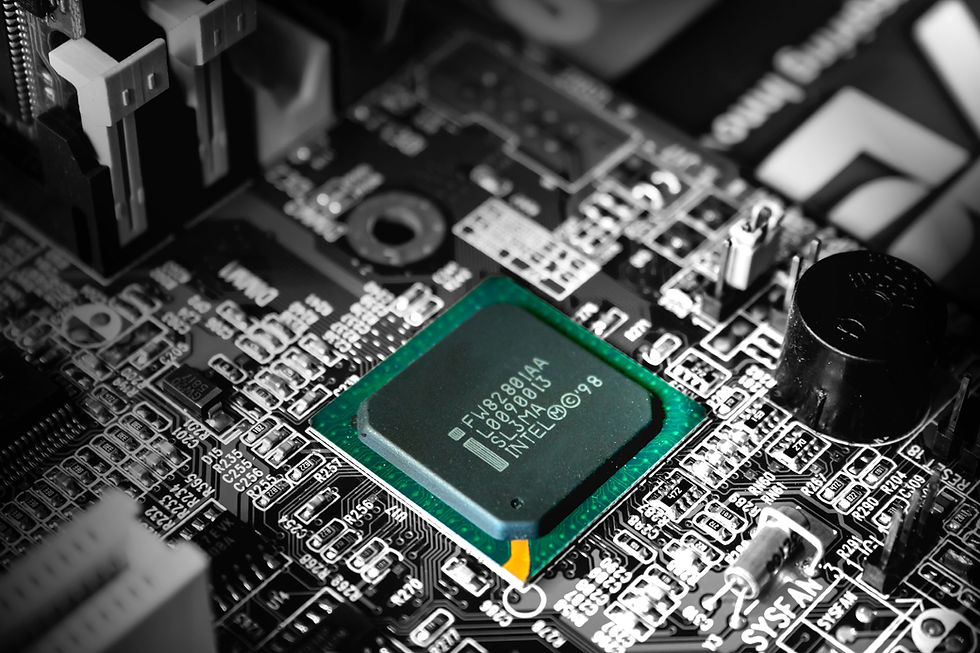The Breakdown of the Electrical Vehicle Platform
- Ben Seaman
- Apr 25, 2024
- 3 min read

Example from TI for ADAS and Domain Controller Blocks
Designing an electric vehicle (EV) involves various components, each crucial for its functionality, efficiency, and safety. When our engineers architecture a system for a vehicle platform we examine each major function in more defined detail. Often communication structure, safety segregation, and other control aspects need further exploration/definition.
Here are some key design components of an electric vehicle:
Battery Pack: The battery pack is the heart of an electric vehicle, storing electrical energy to power the vehicle. It consists of numerous lithium-ion cells arranged in modules or packs. The design must ensure efficient cooling, heating, and safety features to prevent overheating and thermal runaway.
Electric Motor: Electric motors in EVs convert electrical energy from the battery into mechanical energy to propel the vehicle. They come in various types, such as AC induction motors, permanent magnet motors, and switched reluctance motors. The motor's design influences factors like power output, efficiency, and torque delivery.
Power Electronics: Power electronics components include inverters, converters, and controllers that manage the flow of electricity between the battery, motor, and other vehicle systems. Their design affects energy efficiency, motor performance, and overall vehicle dynamics. We partner with many drivetrain, motor assembly, motor controller systems suppliers and can help with drive train torque requirements selection.
Charging System: EV charging systems encompass onboard chargers, charging ports, and external charging stations. Design considerations include charging speed, compatibility with different power sources (AC or DC), and safety features such as overcurrent and overvoltage protection.
Thermal Management System: Efficient thermal management is critical for maintaining optimal operating temperatures of the battery, motor, and power electronics. Design elements may include cooling systems, heat exchangers, and thermal insulation to regulate temperatures and maximize component longevity.
Vehicle Architecture: The overall vehicle architecture, including chassis, body structure, and aerodynamics, impacts performance, range, and safety. Lightweight materials like aluminum and carbon fiber help reduce weight and enhance energy efficiency, while aerodynamic design minimizes drag for improved range.
Regenerative Braking System: Regenerative braking systems capture kinetic energy during braking and convert it into electrical energy to recharge the battery. Design considerations involve integrating regenerative braking with traditional braking systems, optimizing efficiency, and ensuring smooth vehicle deceleration.
Energy Management System (EMS): EMS controls and optimizes the flow of energy within the vehicle, balancing power demands, battery charging, and discharging to maximize efficiency and range. It may incorporate algorithms for predictive energy management based on driving conditions and driver behavior.
Safety Systems: EVs require safety systems to protect occupants in the event of a crash or malfunction. These include structural reinforcements, airbags, collision avoidance systems, and advanced driver-assistance features like lane-keeping assist and automatic emergency braking. Low speed vehicles require less stringent overall user requirements that can fast track schedules for niche applications such as Side-by-Side, Agriculture or mining markets.
User Interface and Connectivity: Modern EVs often feature advanced infotainment systems, touchscreen displays, and connectivity options for navigation, entertainment, and remote vehicle monitoring. Designing user-friendly interfaces and integrating smart features enhance the overall driving experience. Our partners at www.OttawaInfotainment.com have a complete customizable Domain controller that can adapted to function as the "brains" of the vehicle to handle both the cluster and the infotainment control. They have an integrated solutions with dual integrated displays (below) and a rugged assemble box for your most complex of systems.

Each of these components plays a vital role in the design and performance of an electric vehicle, contributing to its efficiency, reliability, and appeal to consumers. Contact us at www.cnvg.ca to set up an informative consultation to help you with any function above.




Comments